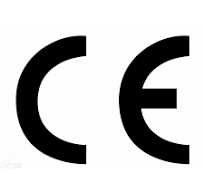-
About us
-
Product
-
News&Events
Understanding the Materials Behind EMS Fat Burning Machines
2025-04-19
The EMS fat burning machine, or Electrical Muscle Stimulation device, has gained popularity in the wellness and fitness industries for its ability to enhance muscle engagement and promote fat loss. Understanding the materials used in these machines is crucial for both manufacturers and consumers, as the choice of material can significantly impact performance, durability, and user safety.
One of the primary materials utilized in EMS fat burning machines is medical-grade silicone. This material is favored for its flexibility, durability, and biocompatibility, making it ideal for direct contact with the skin. Medical-grade silicone is not only hypoallergenic but also easy to clean, ensuring that the device maintains hygiene standards. Additionally, silicone can withstand various temperatures, which is essential for machines that may involve heat generation during use.
Another critical component in EMS machines is the conductive gel commonly used in conjunction with the electrode pads. This gel is typically composed of water, electrolytes, and thickening agents, designed to enhance the conductivity of the electrical impulses sent through the electrodes. The gel helps in delivering effective stimulation to the muscle tissues, improving the overall effectiveness of the fat burning process. It is essential to ensure that the gel is formulated to minimize skin irritation and provide a smooth application experience.
The electrodes themselves are often made from materials such as stainless steel or conductive fabric. Stainless steel is praised for its corrosion resistance and durability, ensuring that the electrodes maintain their functionality over time. Conductive fabric, on the other hand, offers flexibility and comfort, allowing for better adherence to the skin and facilitating a more comfortable user experience.
Additionally, the casing of EMS fat burning machines is typically constructed from high-quality plastics or metals, which are lightweight yet sturdy. The choice of these materials ensures that the machines are portable and easy to handle while providing protection for the internal components.
It is also worth mentioning that the manufacturing processes for these materials must adhere to strict safety and quality standards. This is especially important in the medical and wellness sectors, where devices are often used on sensitive skin areas. Companies should prioritize sourcing materials that comply with regulatory requirements to ensure consumer safety.
In summary, the materials used in EMS fat burning machines play a crucial role in their performance and safety. From medical-grade silicone for skin contact to conductive gels and durable electrode materials, each component is designed to enhance the overall effectiveness of the device. Understanding these materials can help consumers make informed choices about their EMS fat burning machine, ensuring they select a product that is both effective and safe for use.
One of the primary materials utilized in EMS fat burning machines is medical-grade silicone. This material is favored for its flexibility, durability, and biocompatibility, making it ideal for direct contact with the skin. Medical-grade silicone is not only hypoallergenic but also easy to clean, ensuring that the device maintains hygiene standards. Additionally, silicone can withstand various temperatures, which is essential for machines that may involve heat generation during use.
Another critical component in EMS machines is the conductive gel commonly used in conjunction with the electrode pads. This gel is typically composed of water, electrolytes, and thickening agents, designed to enhance the conductivity of the electrical impulses sent through the electrodes. The gel helps in delivering effective stimulation to the muscle tissues, improving the overall effectiveness of the fat burning process. It is essential to ensure that the gel is formulated to minimize skin irritation and provide a smooth application experience.
The electrodes themselves are often made from materials such as stainless steel or conductive fabric. Stainless steel is praised for its corrosion resistance and durability, ensuring that the electrodes maintain their functionality over time. Conductive fabric, on the other hand, offers flexibility and comfort, allowing for better adherence to the skin and facilitating a more comfortable user experience.
Additionally, the casing of EMS fat burning machines is typically constructed from high-quality plastics or metals, which are lightweight yet sturdy. The choice of these materials ensures that the machines are portable and easy to handle while providing protection for the internal components.
It is also worth mentioning that the manufacturing processes for these materials must adhere to strict safety and quality standards. This is especially important in the medical and wellness sectors, where devices are often used on sensitive skin areas. Companies should prioritize sourcing materials that comply with regulatory requirements to ensure consumer safety.
In summary, the materials used in EMS fat burning machines play a crucial role in their performance and safety. From medical-grade silicone for skin contact to conductive gels and durable electrode materials, each component is designed to enhance the overall effectiveness of the device. Understanding these materials can help consumers make informed choices about their EMS fat burning machine, ensuring they select a product that is both effective and safe for use.
 |
 |
 |
 |
Contact us
ADD:2rd floor, Building No.7, Maohuagongchang, Nancaizhen, Shunyi District, Beijing, China.
Phone:0086-15210506323
Whatsapp:0086-15210506323
Email:nancy@sanhebeauty.com
© COPYRIGHT 2024 Sanhe Beauty S & T Co.,Ltd ALL RIGHTS RESERVED Powered by : www.300.cn SEO
Business license

MESSAGE




